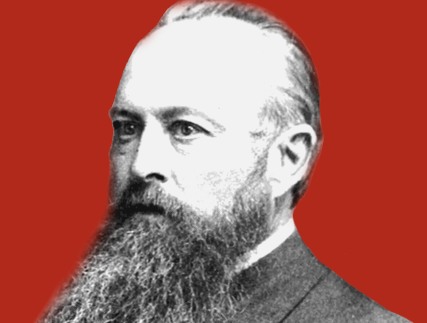I recently attended an event hosted by the Acton Institute entitled “A Gentleman’s Debate: Distributism vs. Free-Markets,” featuring Jay Richards representing economic liberalism/capitalism, and Joseph Pierce representing distributism. While I attended with some appreciation for the fact that Acton would be willing to host such a discussion, I left the event deeply disappointed, albeit unsurprisingly.
Although both speakers began their prepared remarks defining terms they believed were relevant to the discussion, neither raised the concept of or defined the term “distributive justice.” Only Pierce raised the issue of justice at all, prior to detailing a series of examples of practical distributism. Aside from this single reference, justice was completely absent from the conversation. Its absence prevented what could have been a truly fruitful discussion, because there is perhaps no greater distinguishing characteristic between distributism and economic liberalism as distributive justice applied.
In the Summa, St. Thomas Aquinas – drawing from Aristotle – presents a primer on distributive justice as part of the “twofold order”:
On the first place there is the order of one part to another, to which corresponds the order of one private individual to another. This order is directed by commutative justice, which is concerned about the mutual dealings between two persons. On the second place there is the order of the whole towards the parts, to which corresponds the order of that which belongs to the community in relation to each single person. This order is directed by distributive justice, which distributes common goods proportionately. Hence there are two species of justice, distributive and commutative.[1]
Aquinas proceeds in Article 2 to describe such proportionality as one which is measured by a culturally specific value:
[I]n distributive justice something is given to a private individual, in so far as what belongs to the whole is due to the part, and in a quantity that is proportionate to the importance of the position of that part in respect of the whole. Consequently in distributive justice a person receives all the more of the common goods, according as he holds a more prominent position in the community.[2]
But how do we measure the “importance” of one’s “position”? How does one ascribe value to a position such that we would have a way of measuring what is proportionate? Aquinas tells us that this depends on the type of community that at issue. He tells us, for example, that in an aristocracy, prominence is measured by virtue, that in an oligarchy, prominence is measured by wealth, and that in a democracy, prominence is measured by liberty.[3]
Any examination of the distinction between distributism and economic liberalism should include a discussion of distributive justice, and any discussion of distributive justice should incorporate the Aquinas’ analysis in some meaningful fashion. Such a discussion would expose the key distinction between these two economic visions:
When asked what criterion should be used to determine whether an economic model is the type of economic model that would lead to human flourishing, distributism replies with an application of distributive justice. Economic liberalism does not. In fact, economic liberalism has a tendency to reject the concept altogether, presumably because the proportionality that distributive justice demands involves a cultural judgment rather than a mathematical calculation.[4] In The Constitution of Liberty, for example, Hayek goes at some length to demonstrate why it is impossible to achieve distributive justice within the context of a liberal market.[5]
This rejection can lead to moments where the benefits of distributism are clouded, or perhaps outright ignored. For example, in his opening remarks, Richards noted that the value of labor increases with the addition of capital and that it doesn’t make a difference to this value where labor and capital are united. While there might not be any mathematical difference in such value, however, the unification of labor and capital better serves distributive justice. Richards did not expressly dispute this, but that’s likely because his statements appeared to ignore the virtue altogether.
It is important to lay this foundation and allow it to set because the absence of distributive justice in our economy serves to explain why there has been such a breakdown of both economic equilibrium[6] and the social cohesion and mutual trust necessary for markets to function well.[7] This foundation also serves as the basis for answers to many of the criticisms and questions that were lodged against distributism during and after the discussion. One question came from Fr. Sirico, the moderator of the event. He asked Pierce to speak to the role of the state in a distributist economy – seeking to engage him on those areas which distributists and economic liberals obviously disagree.
This is an area that exposes the inconsistent or arbitrary manner in which economic liberalism pays lip service to justice. Capitalists have little problem defending the role of the state when it comes to the defense of purported property rights. They seemingly have little to no problem defending the role of the state when it comes to serving justice in other areas of the private sector as well. One would be mad to suggest there should be a “free” market for murder or suicide. Surely no one at the Acton Institute would advocate for a position that says the government should not be involved in the market for abortion. But why should we allow for some just mandates from the state and yet prohibit others?
Distributism can offer a model whereby a consistent and holistic understanding of justice can be implemented in the market, viz., through the rule of law. While Hayek suggested that the rule of law serves to limit the ability to serve justice in the marketplace[8], I would suggest that it is precisely the rule of law that should serve to limit the ability of any person from exceeding the bounds of justice, regardless of whether that person wields the power of the state or the power of capital in the marketplace.
The idea that the government can regulate the marketplace in an effective and un-intrusive way is not an untested concept. The Uniform Commercial Code – promulgated to varying degrees in all fifty states – has long served to implement and maintain certain standards and policies, such as the simplification and modernization of the law governing commercial transactions and the promotion of continual expansion of commercial practices through custom, trade usage, and agreements between market participants.[9] Codified by the state legislature and enforced by state courts through private causes of action, the uniform commercial code serves as a sensible example that policies (dare I say virtue?) can be promoted and encouraged in the market place without resorting to a massive, intrusive, bureaucratic centralized state.
At the same time (and in connection with another question that was raised during the Q&A session following the debate) distributive justice need not be offended by recourse to those industries and markets that have scaled up as a result of modern technology. Through the use of Employee Stock Ownership Plans[10] and businesses organized or incorporated on a cooperative basis, firms based on a distributist model can and do compete with the best of those businesses which profit from a model which divorces capital and labor.
The Emilia Romagna region of northern Italy, for example, is renowned for its model of “flexible manufacturing,” with many businesses serving as upstream suppliers of equipment and parts to a host of Italian luxury and sports car and motorcycle manufacturers, including Ferrari, Maserati and Ducati.[11] The Evergreen Cooperatives in and around Cleveland, Ohio, have for their part demonstrated that there are wellsprings of potential capital in local “anchor institutions” that worker-owned enterprises can use to implement distributive justice within a variety of industries.[12] The cooperative model is a treasure which should be promoted and encouraged by both the private and public sectors. While it falls short of perfection, it is another tool available to implement a commitment to distributive justice in the marketplace.
This is but a small set of examples of how distributive justice might be implemented in the markets. We need innovators open to the application of an authentic vision of distributive justice, and dialogue is a necessary part of developing the soil out of which such innovation will grow. While I applaud any effort to open up dialogue, the conversation must include a frank and open discussion about distributive justice, lest we risk reducing the conversation to a series of straw men and quips devoid of substance. We must begin with a candid inquiry into the concept of distributive justice and its roots in Aristotle and Aquinas, and we must broach whether economic liberalism truly has an interest in carrying out its demands.
—
[1] Summa Theologiae, Secunda Secundae, Q. 61, Art. 1 (emphasis added).
[2] Id., Art. 2 (emphasis added).
[3] Id.
[4] John C. Medaille, Toward a Truly Free Market: A Distributist Perspective on the Role of Government, Taxes, Health Care, Deficits, and More (ISI Books: 2010), 61-63.
[5] Friedrich A. Hayek, The Constitution of Liberty (The University of Chicago Press: 1960), 100, 232-33.
[6] Medaille, 69.
[7] Benedict XVI, Caritas in Veritate, 6.
[8] Hayek, 232-33.
[9] Uniform Commercial Code, § 1-103.
[10] A highly effective (albeit imperfect) vehicle for giving labor the opportunity to become stakeholders in the very business in which their efforts are applied.
[11] Interview with Matt Hancock on the Emilia Romagna Model, Ohio Employee Ownership Center, Kent State University, found at http://dept.kent.edu/oeoc/oeoclibrary/HancockInterviewMarch2006.htm
[12] See, Fred Rose, Bringing Wealth Creation Closer to Low-Income Communities, Federal Reserve Bank of Boston, found at https://www.bostonfed.org/commdev/c&b/2014/winter/bringing-wealth-creation-closer-to-low-income-communities.htm

















